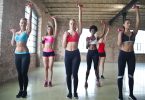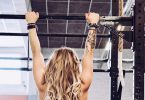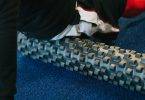Introduction:
Incorporating a variety of exercises into your strength training routine is essential for continuous progress and avoiding plateaus. While dumbbell pull-overs have been a popular exercise for targeting the upper body and core muscles, there are alternative movements that can offer fresh challenges and enhance your gains. In this article “Uncover the Ultimate Alternatives to Dumbbell Pull-Overs”, we will explore the ultimate alternatives to dumbbell pull-overs, providing detailed explanations and benefits for each exercise.
-
Barbell Pullovers:
- Overview: Barbell pullovers are a compound exercise that primarily targets the lats, chest, and triceps.
- Technique: Lie across a bench with your head off one end, hold a barbell with an overhand grip, and lower it behind your head while keeping your elbows slightly bent. Raise the barbell back to the starting position.
- Benefits: Barbell pullovers engage a larger range of muscles compared to dumbbell pull-overs, promoting better overall strength development and muscle growth.
-
Cable Pullovers:
- Overview: Cable pullovers offer constant tension throughout the movement, emphasizing the engagement of the lats and core muscles.
- Technique: Attach a rope handle to a high pulley, hold the ends of the rope, and stand facing away from the machine. With your arms extended overhead, pull the rope down and forward, driving your elbows towards your thighs.
- Benefits: Cable pullovers provide a steady resistance, challenging both the eccentric and concentric phases of the exercise, resulting in enhanced muscle recruitment and improved core stability.
-
Resistance Band Pull-Overs:
- Overview: Resistance band pull-overs are a portable and versatile alternative to traditional dumbbell exercises, targeting the back, shoulders, and triceps.
- Technique: Anchor a resistance band at chest height, grasp the band with both hands, and extend your arms straight in front of you. Pull the band overhead, maintaining tension, and then return to the starting position.
- Benefits: Resistance band pull-overs help improve stability and control, activate stabilizer muscles, and allow for variable resistance, accommodating all fitness levels.
-
Straight Arm Pulldowns:
- Overview: Straight arm pulldowns isolate the lats and provide a great exercise for building a V-shaped back.
- Technique: Stand facing a high pulley with a straight bar attachment. With your arms extended and a slight bend in your elbows, pull the bar down towards your thighs while keeping your arms straight.
- Benefits: Straight arm pulldowns isolate the lats, promoting their strength and size. This exercise also helps improve shoulder stability and posture.
-
Stability Ball Dumbbell Pullovers:
- Overview: Adding a stability ball to your dumbbell pullovers increases the challenge by engaging more stabilizer muscles and improving core strength.
- Technique: Sit on a stability ball with a dumbbell held overhead. Slowly lower the dumbbell behind your head, maintaining stability on the ball, and then return to the starting position.
- Benefits: Stability ball dumbbell pullovers require enhanced balance and core activation, leading to improved stability, coordination, and core strength.
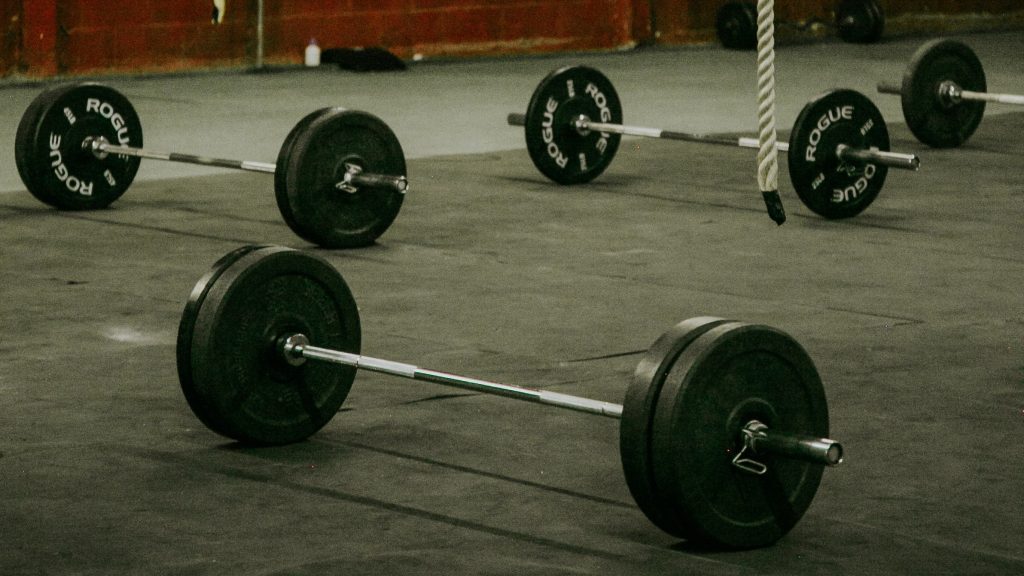
Photo by Amar Preciado: https://www.pexels.com/photo/gym-equipment-9958668/
-
Kettlebell Pullovers:
- Overview: Kettlebell pullovers provide a unique twist to traditional pull-over exercises by incorporating the use of kettlebells, targeting the back, core, and shoulder muscles.
- Technique: Lie on a bench with a kettlebell held with both hands, extended overhead. Lower the kettlebell behind your head while maintaining control, and then return to the starting position.
- Benefits: Kettlebell pullovers improve upper body strength and stability, engage the core muscles, and enhance shoulder mobility. The offset weight distribution of the kettlebell adds an additional challenge to the exercise.
-
Inverted Rows:
- Overview: Inverted rows, also known as body rows, are an effective bodyweight exercise that targets the back, biceps, and core muscles.
- Technique: Set up a barbell or suspension trainer at waist height. Grab the bar or handles with an overhand grip and position yourself at an angle with your body fully extended. Pull your chest towards the bar while keeping your body straight, and then lower yourself back down.
- Benefits: Inverted rows are a versatile exercise that can be modified to accommodate different fitness levels. They improve upper body strength, posture, and scapular stability.
-
Renegade Rows:
- Overview: Renegade rows combine the benefits of a push-up and a row, challenging the chest, back, shoulders, and core muscles simultaneously.
- Technique: Start in a high plank position with a dumbbell in each hand. Perform a push-up, and then row one dumbbell up towards your ribcage while stabilizing your body. Alternate sides for each repetition.
- Benefits: Renegade rows improve upper body strength, muscular endurance, and core stability. They also promote balanced muscle development and coordination.
-
Swiss Ball Hyperextensions:
- Overview: Swiss ball hyperextensions target the lower back, glutes, and hamstrings, providing a dynamic exercise to strengthen the posterior chain.
- Technique: Lie facedown on a Swiss ball with your feet anchored against a wall or other stable surface. Place your hands behind your head or across your chest, and then lift your upper body off the ball, extending your spine. Lower back down with control.
- Benefits: Swiss ball hyperextensions help improve lower back strength, posture, and spinal stability. They also engage the glutes and hamstrings, promoting balanced lower body development.
-
Bodyweight Superman Pulses:
- Overview: Bodyweight superman pulses effectively engage the entire posterior chain, including the lower back, glutes, and upper back muscles.
- Technique: Lie facedown on the floor with your arms extended overhead and your legs straight. Lift your arms, chest, and legs off the ground simultaneously, creating a “flying” position. Pulse up and down while maintaining tension in the muscles.
- Benefits: Bodyweight superman pulses improve spinal erector strength, glute activation, and posture. They also help alleviate lower back pain and enhance overall back muscle endurance.
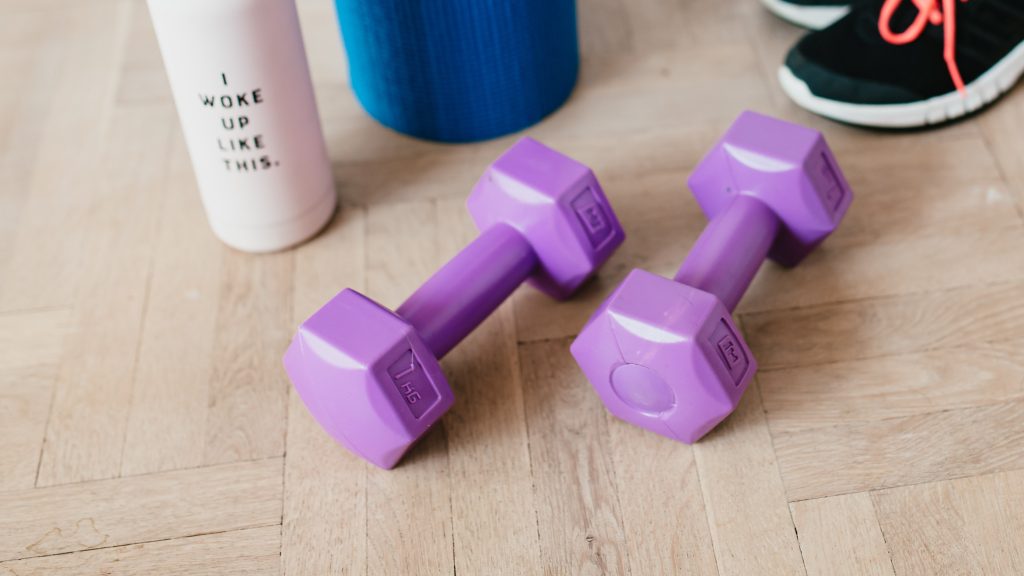
Photo by Karolina Grabowska: https://www.pexels.com/photo/crop-female-athlete-with-sport-accessories-4498607/
-
Lat Pulldowns:
- Overview: Lat pulldowns are a staple exercise for targeting the latissimus dorsi muscles, commonly known as the lats, as well as the biceps and upper back.
- Technique: Sit at a lat pulldown machine with your knees positioned securely under the pads. Grab the bar with a wide overhand grip and pull it down towards your chest while keeping your torso upright. Slowly return the bar to the starting position.
- Benefits: Lat pulldowns help develop a strong and well-defined back, improve pulling strength, and enhance posture. They offer a controlled and adjustable resistance suitable for beginners and advanced lifters alike.
-
T-bar Rows:
- Overview: T-bar rows provide a challenging exercise for the upper back, lats, and biceps, simulating a rowing motion with a weighted barbell.
- Technique: Stand with your feet shoulder-width apart, straddling the end of a barbell placed in a landmine attachment or securely anchored. Bend your knees, hinge forward from the hips, and grab the handles with an overhand grip. Pull the barbell towards your torso while maintaining a strong and stable posture. Lower it back down with control.
- Benefits: T-bar rows promote back muscle development, enhance grip strength, and improve overall pulling power. They also engage the core and lower body for stability and support.
-
Single-Arm Dumbbell Rows:
- Overview: Single-arm dumbbell rows are an effective unilateral exercise that targets the lats, rhomboids, and rear delts, helping to correct muscle imbalances.
- Technique: Place one knee and the same-side hand on a bench, keeping your back parallel to the ground. Hold a dumbbell in the opposite hand, extend your arm fully, and then pull the dumbbell towards your torso while keeping your elbow close to your body. Lower the dumbbell back down in a controlled manner.
- Benefits: Single-arm dumbbell rows improve back strength and symmetry, enhance scapular stability, and engage the core for balance and control.
-
Smith Machine Rows:
- Overview: Smith machine rows provide a stable and controlled environment for targeting the back, biceps, and rear delts, using the barbell on a guided track.
- Technique: Stand facing a Smith machine with the bar set at an appropriate height. Grasp the bar with an overhand grip, hinge forward from the hips, and maintain a slight bend in your knees. Pull the bar towards your abdomen, squeezing your shoulder blades together, and then return to the starting position.
- Benefits: Smith machine rows offer a safer and more controlled alternative to free weight rows, allowing for heavier loads and focused muscle targeting. They promote back strength, improve posture, and minimize strain on the lower back.
-
Bent-Over Reverse Flyes:
- Overview: Bent-over reverse flyes primarily target the rear deltoids, upper back, and rhomboids, helping to counteract the effects of poor posture and rounded shoulders.
- Technique: Stand with your feet hip-width apart, holding a pair of dumbbells with an overhand grip. Hinge forward from the hips, keeping your back straight, and slightly bend your knees. With a slight bend in your elbows, raise your arms out to the sides, squeezing your shoulder blades together. Lower the weights back down in a controlled manner.
- Benefits: Bent-over reverse flyes improve posture, strengthen the rear delts, and enhance scapular stability. They are particularly beneficial for individuals who spend long hours sitting or hunching over.
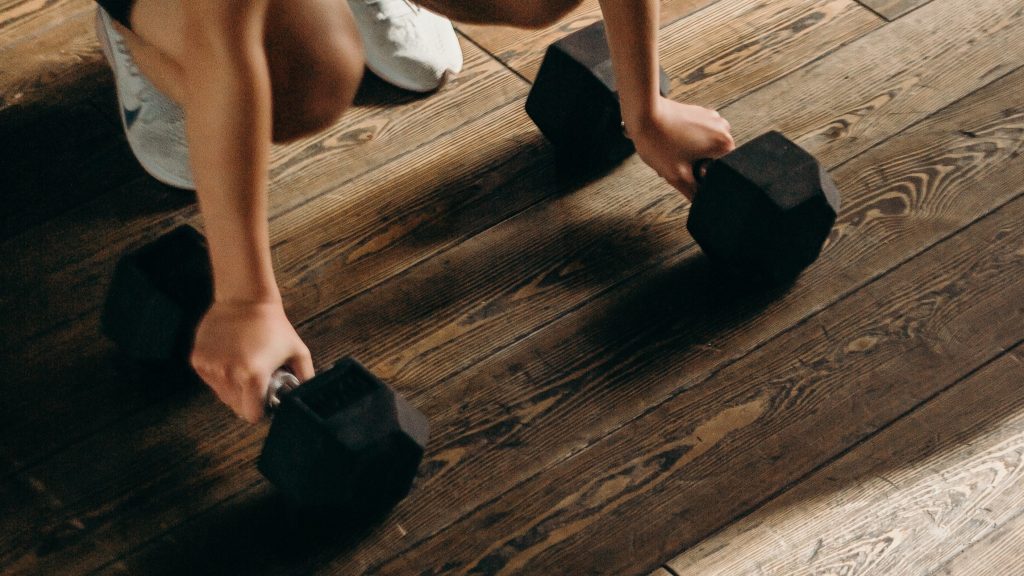
Image by cottonbro studio: https://www.pexels.com/photo/person-in-white-shorts-and-black-shoes-standing-on-brown-wooden-floor-4754001/
-
Seated Cable Rows:
- Overview: Seated cable rows are an effective exercise for targeting the upper back, rhomboids, and biceps, using a cable machine and a seated position.
- Technique: Sit on a cable row machine with your feet against the footrests and knees slightly bent. Grasp the handle with an overhand grip, sit tall with a neutral spine, and pull the handle towards your torso, squeezing your shoulder blades together. Slowly extend your arms back to the starting position.
- Benefits: Seated cable rows promote back muscle development, improve posture, and enhance grip strength. They offer a consistent resistance throughout the movement and allow for easy adjustment of weight.
-
Chest-Supported Rows:
- Overview: Chest-supported rows target the upper back, rear delts, and rhomboids while minimizing strain on the lower back by utilizing a supportive bench.
- Technique: Position yourself facedown on an incline bench with your chest against the pad, holding a pair of dumbbells or a barbell. With a neutral spine, pull the weights towards your lower chest while keeping your elbows close to your body. Lower the weights back down in a controlled manner.
- Benefits: Chest-supported rows isolate the back muscles and minimize involvement of other muscle groups, allowing for focused development of the upper back. They are especially beneficial for individuals with lower back issues or limited core stability.
- Overview: Machine rows provide a guided and controlled movement that targets the back, biceps, and rear delts, using a dedicated machine with an adjustable seat and handles.
- Technique: Adjust the seat height and handle position according to your preference. Sit with your chest against the pad, grasp the handles with an overhand grip, and pull them towards your torso, squeezing your shoulder blades together. Slowly extend your arms back to the starting position.
- Benefits: Machine rows offer a stable and safe exercise option, allowing for isolated back muscle targeting and ease of use. They are suitable for beginners and can help develop overall back strength and stability.
-
Landmine Rows:
- Overview: Landmine rows are a compound exercise that engages the back, shoulders, and core muscles, utilizing a barbell anchored in a landmine attachment or corner.
- Technique: Place one end of a barbell in a landmine attachment or securely in a corner. Stand with your feet shoulder-width apart, grasp the other end of the barbell with one hand, and hinge forward from the hips. Pull the barbell towards your abdomen, retracting your shoulder blade, and then lower it back down.
- Benefits: Landmine rows promote upper back and shoulder strength, improve scapular stability, and engage the core for stability and control. They offer a unique movement pattern and can be performed unilaterally or with both hands.
-
Resistance Band Rows:
- Overview: Resistance band rows provide a portable and versatile alternative to traditional rowing exercises, targeting the back, biceps, and rear delts.
- Technique: Anchor a resistance band securely, hold the ends in each hand, and step back to create tension in the band. Hinge forward from the hips, keep your back straight, and pull the band towards your abdomen, squeezing your shoulder blades together. Slowly release the tension and return to the starting position.
- Benefits: Resistance band rows offer variable resistance, accommodating different fitness levels, and promoting back muscle development. They can be performed anywhere, making them a convenient option for home workouts or while traveling

Photo by Pixabay: https://www.pexels.com/photo/color-colour-fitness-health-39671/
-
Pull-Up Variations:
- Overview: Pull-up variations are challenging bodyweight exercises that primarily target the back, biceps, and shoulders, with different hand placements and grips providing varied muscle emphasis.
- Technique: Hang from a pull-up bar with your hands placed either in an overhand (pronated), underhand (supinated), or neutral grip. Pull your body up until your chin reaches or clears the bar, and then lower yourself back down with control.
- Benefits: Pull-up variations build upper body strength, improve grip strength, and promote overall back development. They can be modified with assistance bands or assisted pull-up machines for beginners.
-
Kroc Rows:
- Overview: Kroc rows, named after powerlifter Matt Kroczaleski, are a high-rep version of dumbbell rows that target the back, biceps, and rear delts, emphasizing muscular endurance.
- Technique: Bend over a bench with one hand and knee placed on it, holding a dumbbell in the opposite hand. Pull the dumbbell towards your torso in a rowing motion, allowing your elbow to flare out slightly. Perform high-rep sets with challenging weights.
- Benefits: Kroc rows help build back strength and endurance, improve grip strength, and promote mental toughness. They are particularly beneficial for individuals seeking hypertrophy and muscular conditioning.
-
Deadlifts:
- Overview: Deadlifts are compound exercises that engage multiple muscle groups, including the back, glutes, hamstrings, and core, promoting overall strength and power.
- Technique: Stand with your feet hip-width apart, bend down to grasp a barbell with a shoulder-width grip, and hinge at the hips while keeping your back straight. Drive through your heels, extend your hips, and stand up while holding the barbell. Lower the barbell back down with control.
- Benefits: Deadlifts build full-body strength, improve posterior chain development, enhance grip strength, and stimulate muscle growth. They are a fundamental exercise for functional strength and athleticism.
-
Romanian Deadlifts:
- Overview: Romanian deadlifts, often referred to as RDLs, primarily target the hamstrings, glutes, and lower back, helping to improve hip hinge mechanics and strengthen the posterior chain.
- Technique: Hold a barbell or dumbbells in front of your thighs with an overhand grip. Hinge forward at the hips, keeping your back straight and a slight bend in your knees. Lower the weight by pushing your hips back, feeling a stretch in your hamstrings, and then return to the starting position by squeezing your glutes and extending your hips.
- Benefits: Romanian deadlifts improve hamstring and glute strength, enhance hip mobility, and contribute to overall posterior chain development. They are effective for improving athletic performance and reducing the risk of lower back injuries.
-
Bent-Over Barbell Rows:
- Overview: Bent-over barbell rows are compound exercises that target the back, biceps, rear delts, and core muscles, providing a comprehensive upper body workout.
- Technique: Stand with your feet shoulder-width apart, hold a barbell with an overhand grip, and hinge forward from the hips with a slight bend in your knees. Pull the barbell towards your abdomen while keeping your elbows close to your body. Lower the barbell back down in a controlled manner.
- Benefits: Bent-over barbell rows promote back muscle development, improve grip strength, enhance posture, and engage the core for stability. They allow for progressive overload and can be modified for different grip variations.
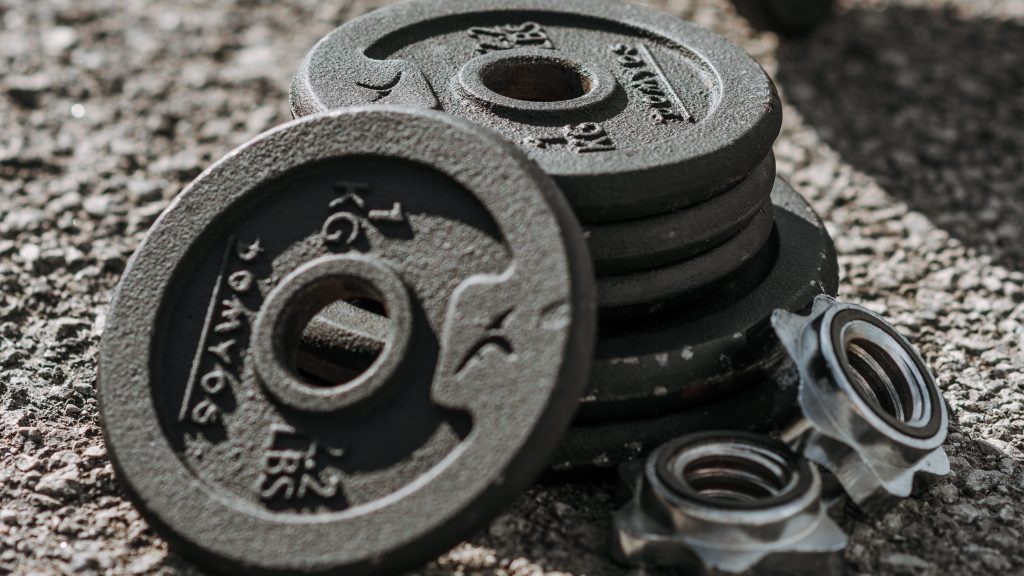
Image by Anete Lusina: https://www.pexels.com/photo/details-for-dumbbell-on-paved-ground-4793221/
-
Farmer’s Walk:
- Overview: Farmer’s walks are a functional exercise that engages the entire body, including the back, core, grip, and leg muscles, while improving overall strength and stability.
- Technique: Hold a heavy dumbbell or kettlebell in each hand with a neutral grip, stand tall with your shoulders back, and walk forward for a designated distance or time while maintaining a strong posture.
- Benefits: Farmer’s walks improve grip strength, enhance core stability, promote functional strength, and increase muscular endurance. They also provide cardiovascular benefits.
-
Barbell Shrugs:
- Overview: Barbell shrugs primarily target the upper trapezius muscles, which are responsible for lifting and supporting the shoulders, enhancing upper body strength and posture.
- Technique: Stand with your feet shoulder-width apart, hold a barbell in front of your thighs with an overhand grip, and lift your shoulders as high as possible, squeezing the trapezius muscles. Lower the barbell back down in a controlled manner.
- Benefits: Barbell shrugs help develop strong and defined trapezius muscles, improve shoulder stability, and enhance posture. They can be modified with different grips and hand placements.
-
Stability Ball Back Extensions:
- Overview: Stability ball back extensions target the lower back muscles, glutes, and hamstrings while providing stability and support through the use of an exercise ball.
- Technique: Lie face down on a stability ball with your hips resting on the ball and your feet anchored against a wall or other stable surface. Place your hands behind your head or across your chest, and then lift your torso up while contracting your lower back muscles. Lower yourself back down with control.
- Benefits: Stability ball back extensions strengthen the lower back, improve posture, enhance spinal stability, and engage the glutes and hamstrings. They also assist in relieving lower back pain.
-
Cable Pull-Throughs:
- Overview: Cable pull-throughs are a compound exercise that targets the glutes, hamstrings, and core, helping to develop strength and power in the posterior chain.
- Technique: Attach a rope or handle to the low pulley of a cable machine. Stand facing away from the machine, hinge forward at the hips, and grab the rope between your legs. Drive your hips forward, extending your body to a standing position while maintaining a slight bend in your knees. Allow the rope to pass through your legs and return to the starting position.
- Benefits: Cable pull-throughs activate the glutes and hamstrings, improve hip hinge mechanics, and enhance overall posterior chain development. They are particularly beneficial for athletes involved in explosive movements.
-
Prone Cobra:
- Overview: The prone cobra exercise targets the muscles of the upper back, posterior shoulders, and spinal erectors, helping to improve posture and strengthen the muscles that counteract rounded shoulders.
- Technique: Lie face down on the floor with your arms extended by your sides, palms facing down. Lift your chest, arms, and legs off the ground while squeezing your shoulder blades together and externally rotating your arms. Hold this position for a few seconds, then relax and repeat.
- Benefits: Prone cobras strengthen the upper back muscles, improve scapular stability, and promote better posture. They also help counteract the negative effects of prolonged sitting and hunching forward.
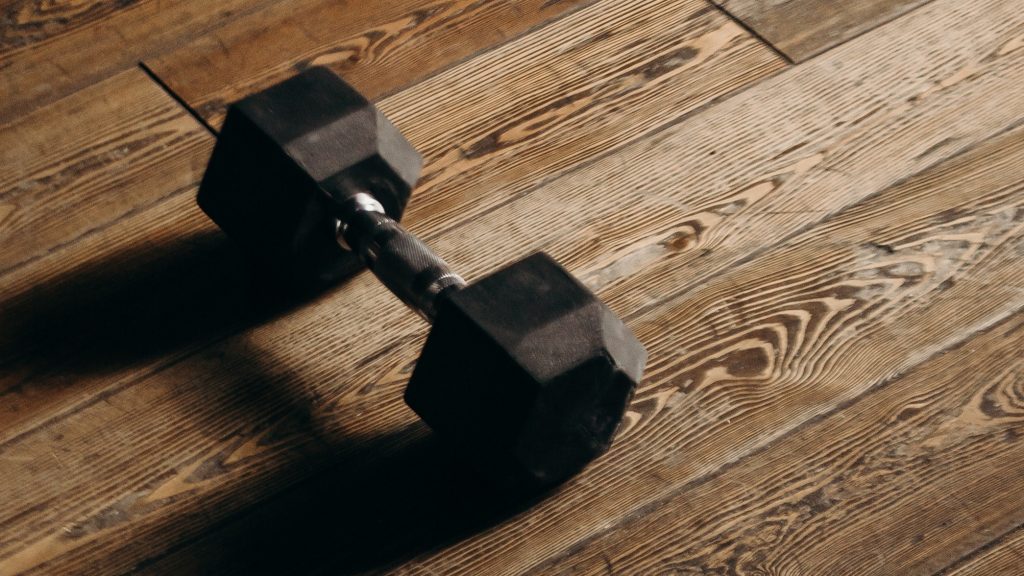
Photo by cottonbro studio: https://www.pexels.com/photo/black-metal-tool-on-brown-wooden-table-4753987/
Conclusion:
In conclusion, diversifying your strength training routine by incorporating alternative exercises to dumbbell pull-overs can bring numerous benefits to your fitness journey. By exploring various options, you can target specific muscle groups, improve overall strength and posture, and prevent workout plateaus. From cable rows and deadlift variations to stability ball exercises and bodyweight movements, there is a wide range of alternatives to choose from, catering to different fitness levels and preferences. Remember to prioritize proper technique, gradually increase intensity and weight, and listen to your body’s limits. By embracing these alternative exercises, you can elevate your strength training regimen and unlock new levels of progress in your fitness endeavors. Happy training!
Keywords:
alternative exercises, strength training, dumbbell pull-overs, diverse workouts, back muscles, rhomboids, biceps, seated cable rows, chest-supported rows, machine rows, landmine rows, resistance band rows, pull-up variations, Kroc rows, deadlifts, Romanian deadlifts, bent-over barbell rows, Farmer’s Walk, barbell shrugs, stability ball back extensions, cable pull-throughs, prone cobra, upper back, posterior chain, glutes, hamstrings, core, grip strength, posture, muscle development, fitness, bodyweight exercises.
For more please Click Here.



